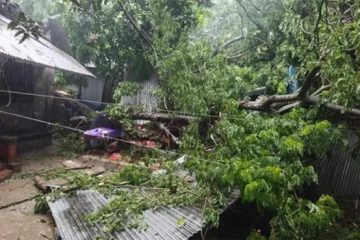WB invites RDA to present the model at its HQ on Feb 19
Hasibur Rahman Bilu, Bogra
Rural Development Academy (RDA), Bogra, is to present RDA-Model of Water Management at the World Bank headquarters in Washington, DC on February 19 for its adaptation across the globe.
The water management model uses underground pipes to irrigate fields and distribute drinking water to households from deep tube-wells which drastically reduce wastage of water.
The World Bank (WB) invited the RDA, a government organisation, to present its paper on the model at the Water Week 2009 scheduled for February 17-20 at its headquarters in the US capital.
WB Sector Manager of Water Anchor Energy and Water and Transport Abel Mejia and Senior Water and Sanitation Specialist and Water Anchor Water Week 2009 Coordinator Philippe Marin sent the invitation letter to MA Matin, director of Centre for Irrigation and Water Management of RDA, Bogra.
Matin started an experimental irrigation programme named Buried Pipe Irrigation System in 1982 at Narhatta village of Kahalu upazila in Bogra to ensure more water to villagers, save electricity and minimise cost.
Initially the system saved 60 kilowatts of power. It covered 67 hectares of land instead of just 16 and saved six lakh litres of water every hour.
In 1987, the second phase of the experimental programme was introduced at Shasibadani village in Bogra Sadar. In the second phase the facility of drinking water distribution from the same deep tube well was added.
“One deep tube well provided drinking water for 2,200 people and ensured irrigation water for 60 hectares of land in the village,” said Matin.
“Barind Multipurpose Development Authority (BMDA), Local Government Engineering Department (LGED) and Bangladesh Agriculture Development Corporation (BADC) along with other government establishments have started replicating the RDA model throughout the country,” he added.
The RDA used the model in more than 200 villages in 55 districts, sources said.
A large amount of government money is being saved as the deep tube wells and the pipe network is owned buy beneficiaries, claimed Matin. “For example the RDA completed a water supply project with eight deep tube wells at a cost of Tk 16 lakh on both side of the Bangabandhu Bridge. The government in 1998 planned to complete the project spending Tk 1.36 crore,” he said.
The RDA also implemented an arsenic- and iron-free water supply project on Jamuna Fertiliser Company premises at Tarakandi in Jamalpur spending Tk 3.25 crore whereas Japan wanted nearly 10 times more to complete the automatic water supply project, Matin claimed.
Jahangir Hossain, 40, a beneficiary of the model, of Garh Mohastan village of Shibganj upazila in Bogra told The Daily Star that he harvests 6.75 tonnes of boro paddy from his one hectare of land on an average. “Before this irrigation system, there was no boro cultivation in the area,” he said.
Sayda Begum, 35, wife of Mohammed Dulu Miah of the same village, said her family is now better protected against waterborne diseases as dirking water is supplied to her home through pipes.
“Most of the villagers were suffering from waterborne diseases before,” she said. The RDA has been supplying drinking and irrigation water to the village for six years.
Deep tube well owner Jahangir said, “We have been providing arsenic- and iron-free drinking water for monthly Tk 10 per person. Each person gets 150 litres of water a day.”
The RDA gave him the total cost of the well as soft loan, Matin said.
WB consultant Elizabeth Kleemeier and a few other WB water supply experts visited several project sites and recommended replicating the model worldwide, he added.
Before signing the Memorandum of Understan-ding (MoU) in 2002 to replicate this model worldwide, Jamal Sagir, director of Energy and Water of WB headquarters visited Basu Bihara village of Shibganj in Bogra.
Courtesy: thedailystar.net




















